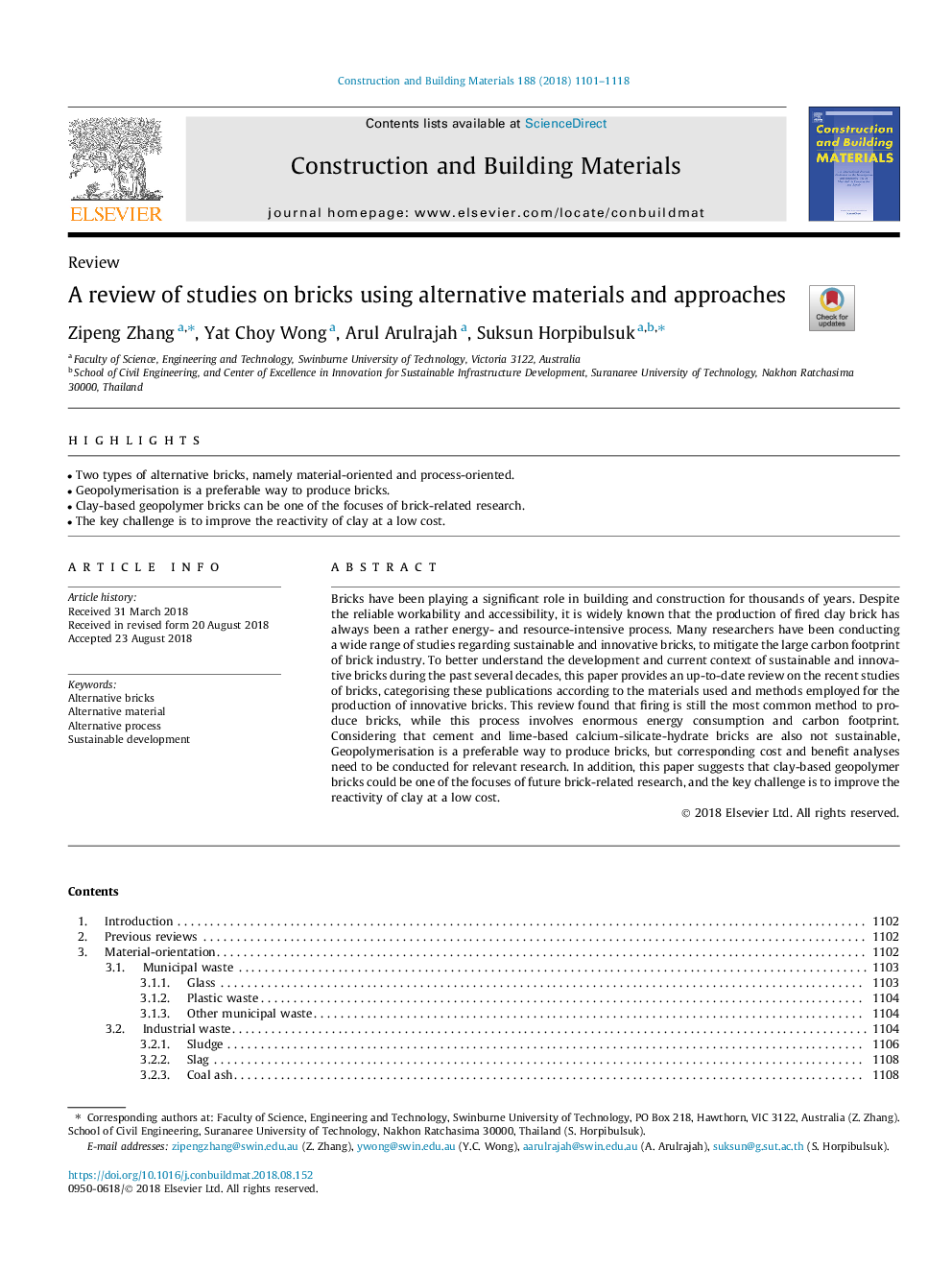| Article ID | Journal | Published Year | Pages | File Type |
|---|---|---|---|---|
| 11032539 | Construction and Building Materials | 2018 | 18 Pages |
Abstract
Bricks have been playing a significant role in building and construction for thousands of years. Despite the reliable workability and accessibility, it is widely known that the production of fired clay brick has always been a rather energy- and resource-intensive process. Many researchers have been conducting a wide range of studies regarding sustainable and innovative bricks, to mitigate the large carbon footprint of brick industry. To better understand the development and current context of sustainable and innovative bricks during the past several decades, this paper provides an up-to-date review on the recent studies of bricks, categorising these publications according to the materials used and methods employed for the production of innovative bricks. This review found that firing is still the most common method to produce bricks, while this process involves enormous energy consumption and carbon footprint. Considering that cement and lime-based calcium-silicate-hydrate bricks are also not sustainable, Geopolymerisation is a preferable way to produce bricks, but corresponding cost and benefit analyses need to be conducted for relevant research. In addition, this paper suggests that clay-based geopolymer bricks could be one of the focuses of future brick-related research, and the key challenge is to improve the reactivity of clay at a low cost.
Related Topics
Physical Sciences and Engineering
Engineering
Civil and Structural Engineering
Authors
Zipeng Zhang, Yat Choy Wong, Arul Arulrajah, Suksun Horpibulsuk,
